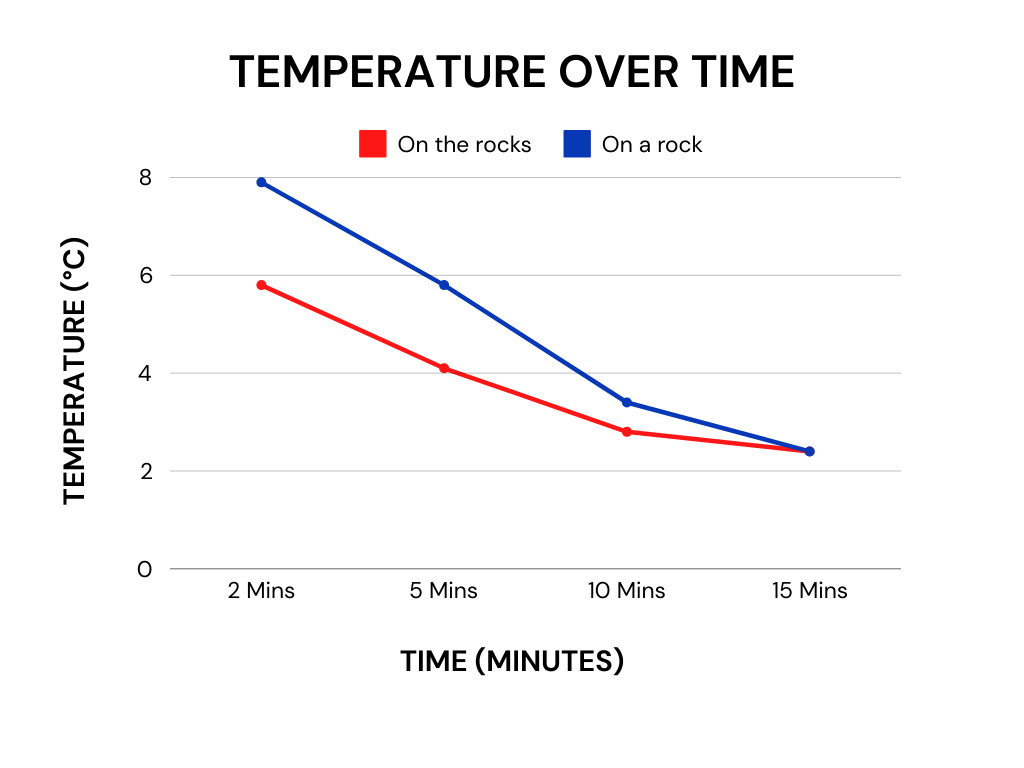On the rocks, or on a rock?
Just a whisky on the rocks thanks… Or should it be on a rock? What’s the better option? Now I enjoy my whisky neat 90% of the time, and if I want a bit of dilution I will just had a few drops of water. But sometimes the circumstances call for a big old tumbler glass, filled with ice and a nice chilled whisky.
So when the days are starting to get longer, hotter, and more ‘whisky on the rocks’ appropriate, should we be having it on the rocks, or on a rock? What’s the difference? Well on the rocks is in a glass filled with multiple ice cubes (think your usual 1.25 inch cubes) and on a rock is one large cube of ice, usually as big as your glass can fit. These big rocks are best when they’re a nice, clear, large cube of ice. They can sometimes be a bit harder to access, whereas the smaller ice cubes are pretty standard in a household. In terms of chilling and adequately diluting your whisky, what is the best way to do it without overdiluting.
In this experiment, 60ml of a 40% ABV whisky was poured into 2 identical glasses. One glass was filled with multiple ice cubes with a total mass of 140g. The other glass was filled with one, large, clear ice cube with a total mass of 140g. The aim was to see what gives you more dilution over time. The volume of the whisky in each glass was checked at 15 minutes and 30 minutes. As a side note, the temperature was also checked at intervals of 2 minutes, 5 minutes, 10 minutes and 15 minutes. The temperature reached a plateau at 15 minutes and no longer needed to be recorded after that.
Now usually when you are drinking your whisky on the rocks/on a rock, a lot of movement takes place. You pick up the glass, you take a sip, you give it the odd swirl and then you sit it down again. This movement does agitate the ice and will cause it to melt and dilute faster. Because this is something that is too hard to control and keep consistent for both glasses, they were just left to sit still the whole time without any outside intervention.
Both with an initial volume of 60ml, the total volume of each was checked after 15 minutes.
‘On the rocks’ ended up with 87ml, a 31% dilution rate, and an ABV of approximately 27.6%.
‘On a rock’ ended up with 80ml, a 25% dilution rate, and an ABV of approximately 30%.
After 30 minutes, ‘On the rocks’ ended up with a total volume of 115ml, a 47% dilution rate, and an ABV of approximately 20.8%.
‘On a rock’ ended up with 108ml, a 44% dilution rate, and an ABV of approximately 22.2%.
On a side note, during the first 15 minute interval, before checking the final volume, the temperature was periodically checked.
‘On the rocks’ certainly chilled down a lot quicker within the first 5 minutes. However this gap between ‘On the rocks’ and ‘On a rock’ narrowed until eventually reaching a plateau at 15 minutes. The temperature didn’t seem to go much lower than around 2.4°C.
So to clear up the science behind actually having your whisky with ice, the increase in dilution and the decrease in temperature go hand in hand. As the ice melts, the dilution increases and the temperature decreases. The water being added to your whisky is the necessary factor to adequately chill the whisky, which is why you should always opt for using real ice and not those whisky stones. The whisky stones are great for damaging your glassware and chipping your teeth, but not for adequately chilling your whisky and keeping it at that chilled temperature. The whole point of adding the ice to your whisky is to also bring that ABV% down to change how the whisky delivers itself.
In the case of this experiment, we will assess the results to determine the right circumstances for ‘On the rocks’ or ‘On a rock’. If you are wanting to have your whisky adequately chilled, diluted, and finished in 5 minutes or less, on the rocks is totally fine and a large rock isn’t really needed. However, if you are planning on sitting back on it for a bit longer and really prolonging your dram, it would probably be a better idea to go for a larger rock. There’s a noticeable difference in the dilution volume between the 2 serves at both the 15 minute mark and the 30 minute mark. ‘On the rocks’ certainly dilutes your whisky more and faster, so if you are taking more than about 5 minutes to finish your whisky, go for a larger rock of ice. The temperature will get down to that plateau temperature after about 15 minutes anyway, and if you are taking your time, this extra waiting shouldn’t be a problem.
Now off the back of this, the next experiment will be looking at these same tests, but with cask strength whisky…




